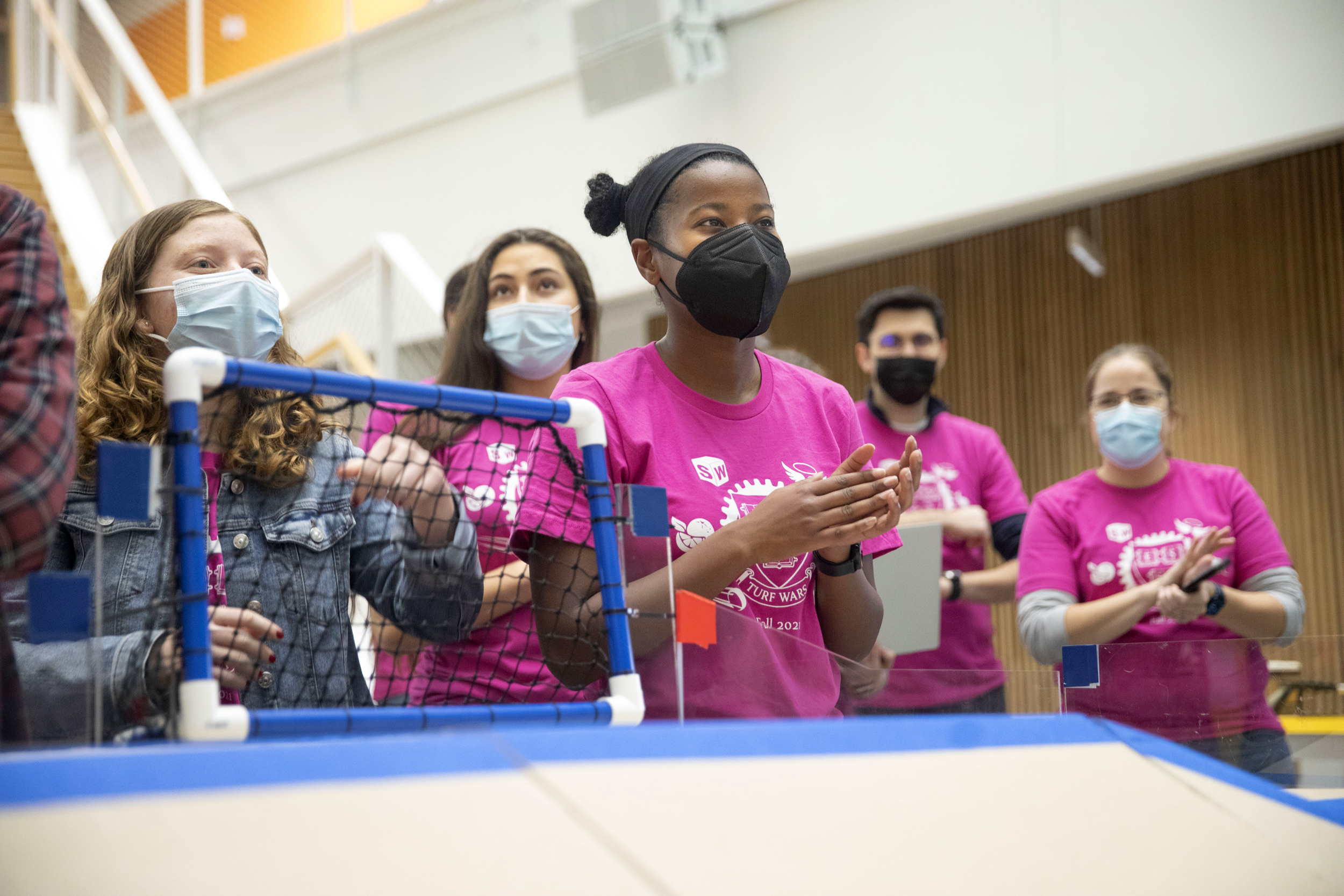A place on the cutting edge
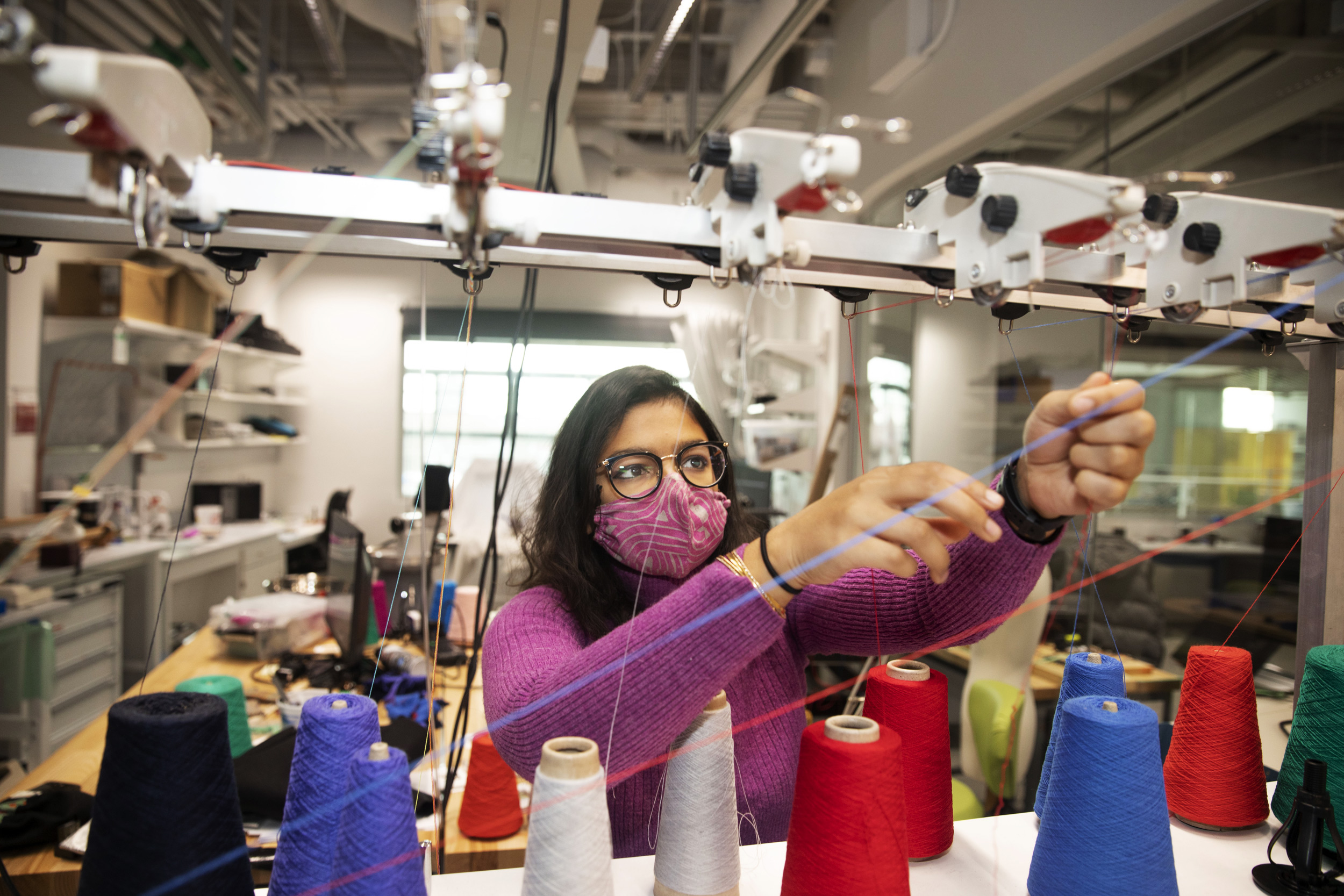
Kausalya Mahadevan, a Ph.D. candidate in mechanic engineering and materials science, designs knit fabrics with unusual mechanical behaviors, such as multistability, for use in wearable devices and functional garments.
Photos by Kris Snibbe/Harvard Staff Photographer
Labs at the new Science and Engineering Complex offer students resources, opportunity, and a place to nurture knowledge
In Harvard’s new Science and Engineering Complex (SEC), now home to the Harvard John A. Paulson School of Engineering and Applied Sciences (SEAS), a myriad of sustainable science labs create a fascinating matrix of learning, innovation, and research. Under a canopy of natural light, researchers explore robotics, bioengineering, computer science, data science, computational science, engineering programs, electrical engineering, materials science, and mechanical engineering.
Elizabeth Gallardo Hevia, a graduate student in the Harvard Microrobotics Laboratory, said the complex fosters community and creates a perfect setting for groundbreaking research. “The environment that you work in is important to productivity and overall happiness,” she said. “The Microrobotics Lab provides all the resources I need to get my work done; the new space at SEC gives me the space to work comfortably and efficiently. The sense of light and incredible views that the building brings into our space puts a smile on my face every day, which definitely keeps my momentum going!”
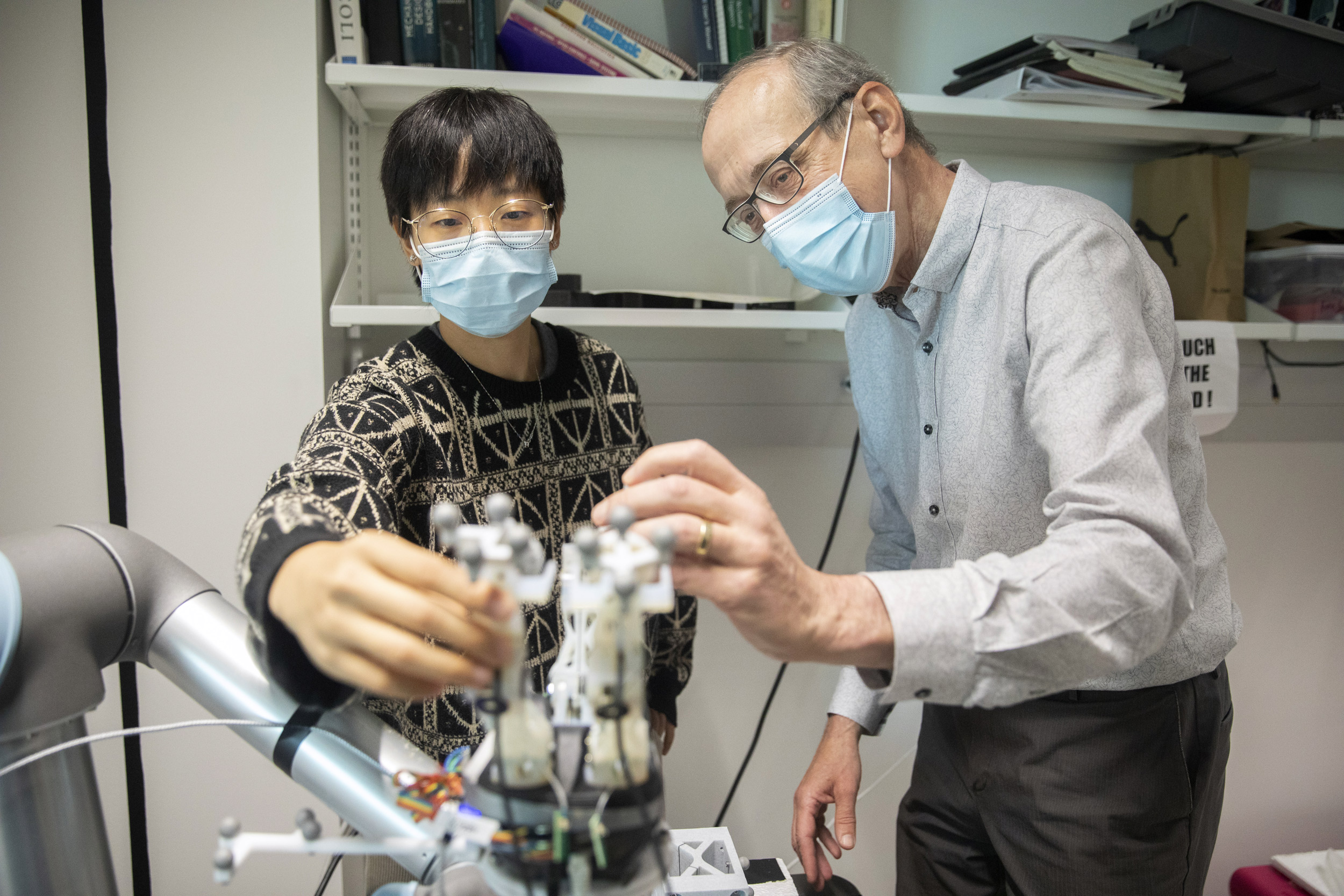
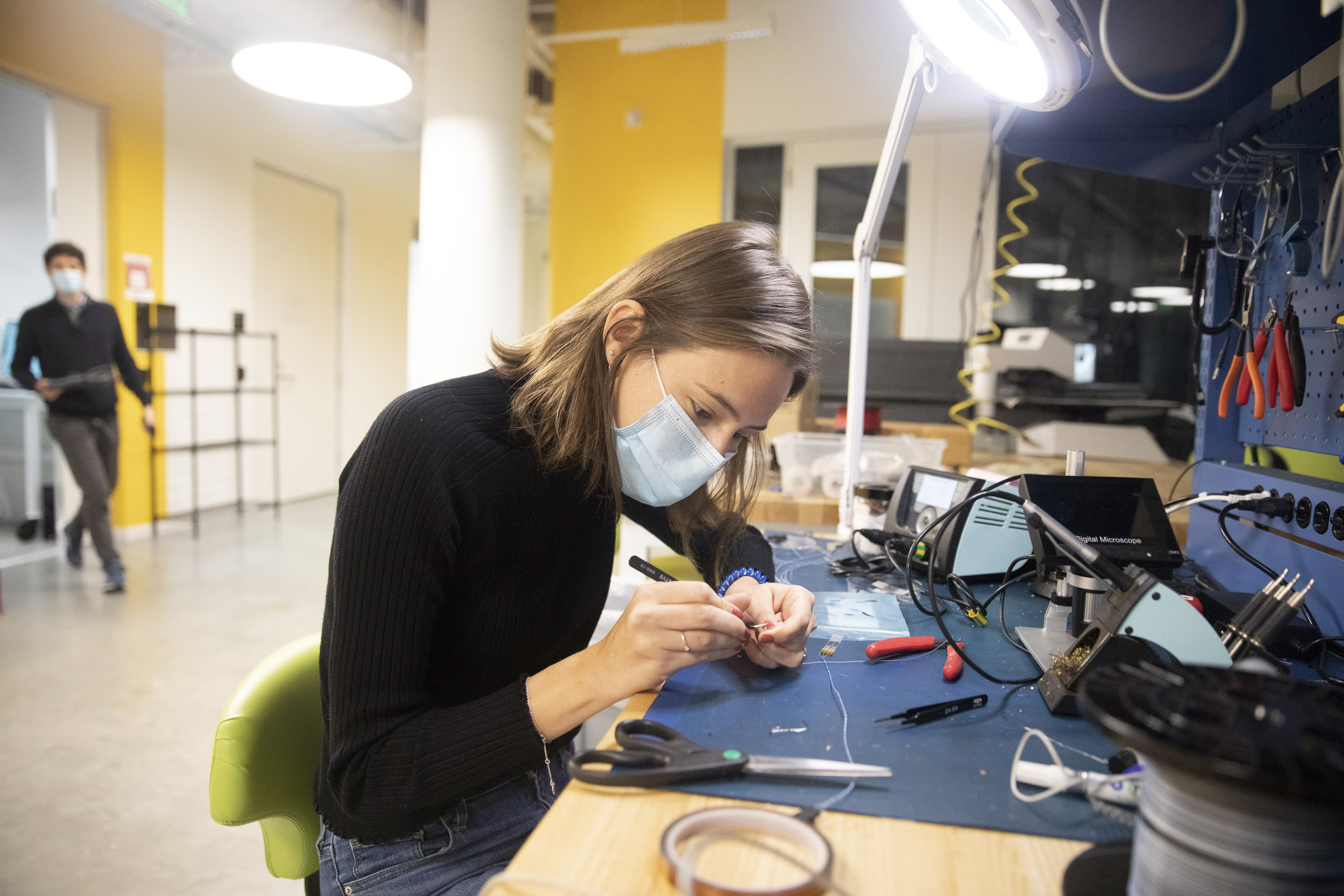
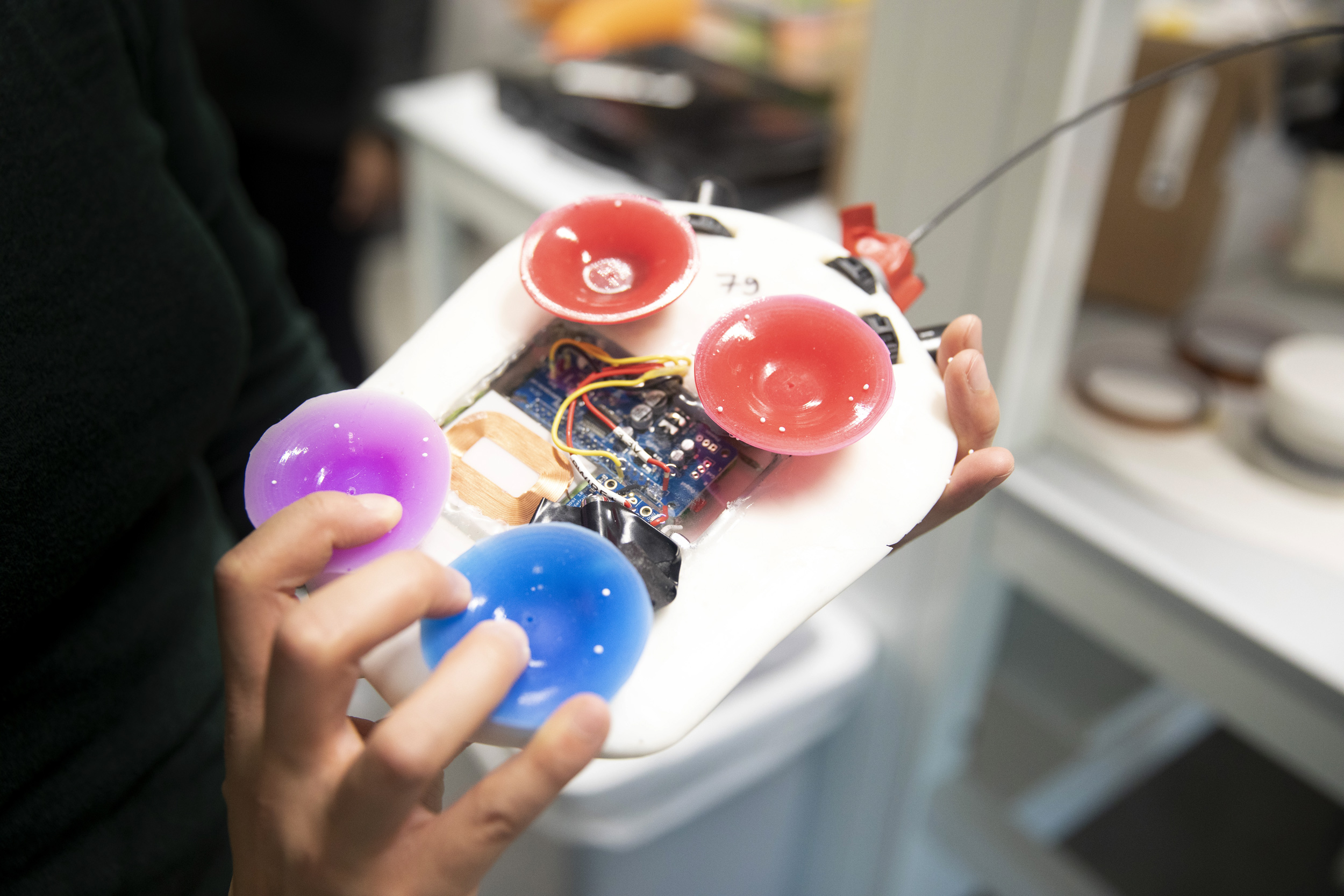
A fellow in materials science and mechanical engineering, Eva Debette researches how to assess muscle strength with a new generation of sensors that are thin, robust, and ideally can be integrated easily into apparel. Here, she finishes welding the electronics of the prototype in order to test it on people and collect data. Graduate School of Arts and Sciences student Emma Steinhardt (hands shown) works in the Microrobotics Laboratory to improve the design of the microrobot known as the Harvard Ambulatory Microrobot (HAMR). These versatile bots can run at high speeds, jump, climb, turn sharply, carry payloads, and fall from great distances without being injured.
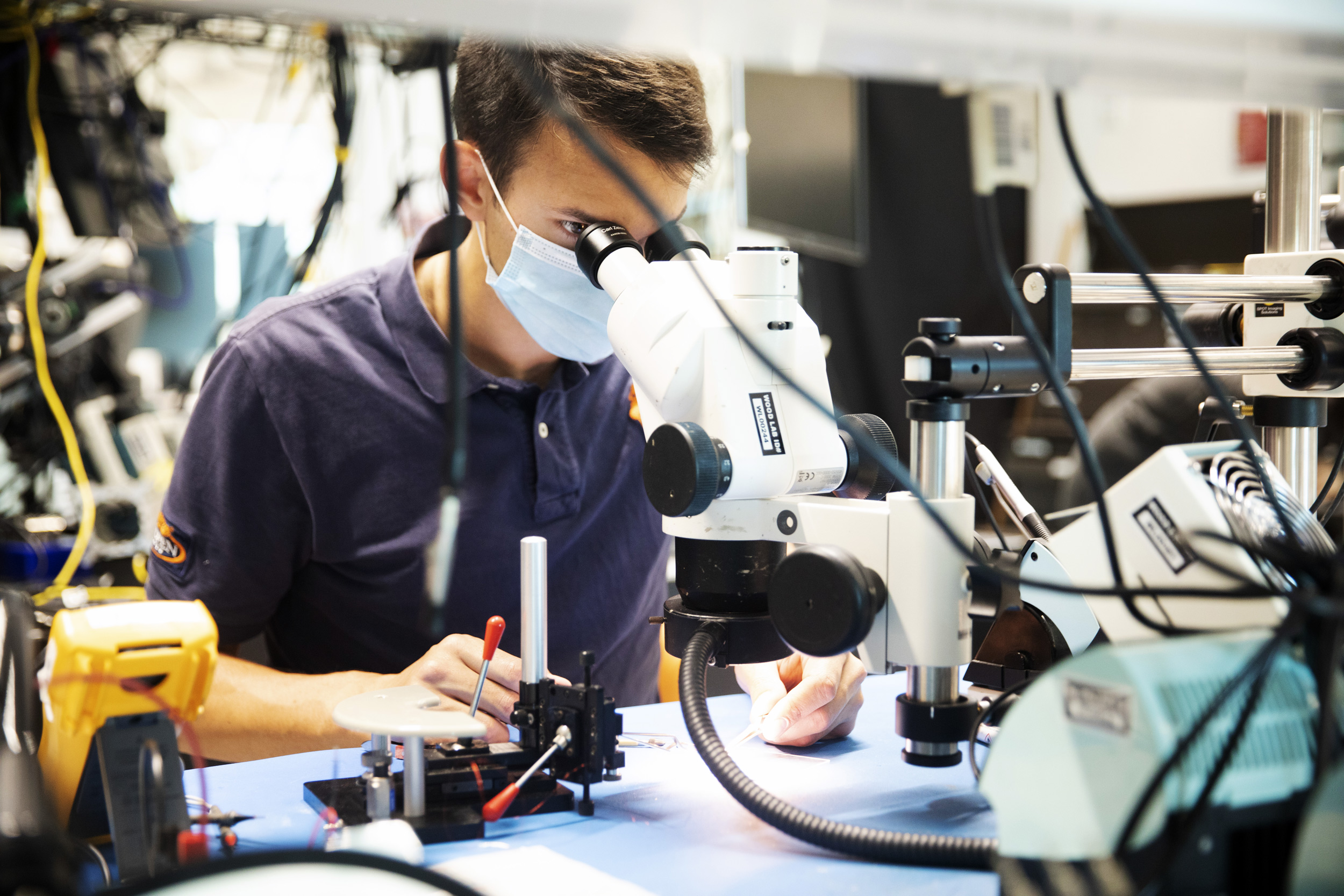
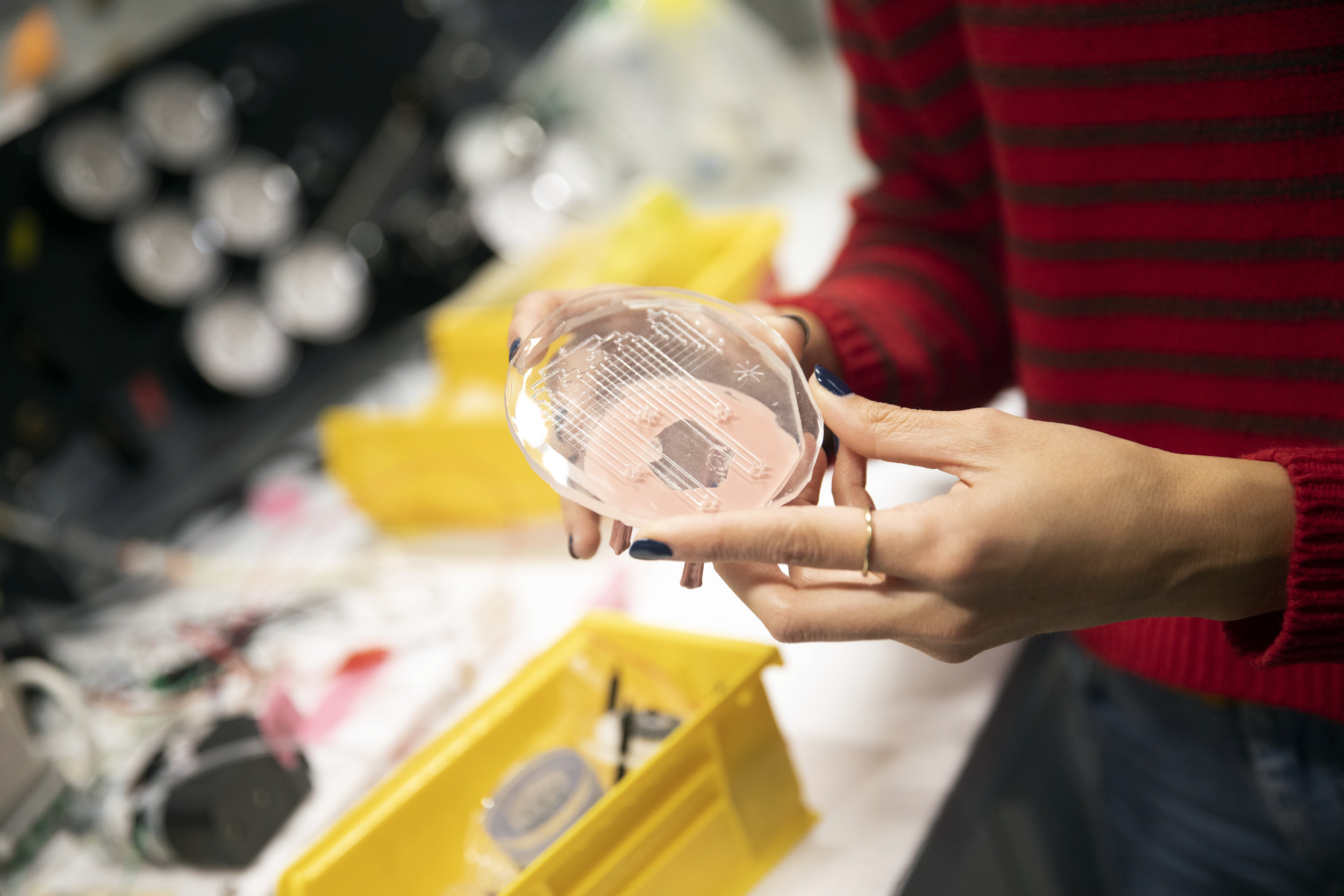
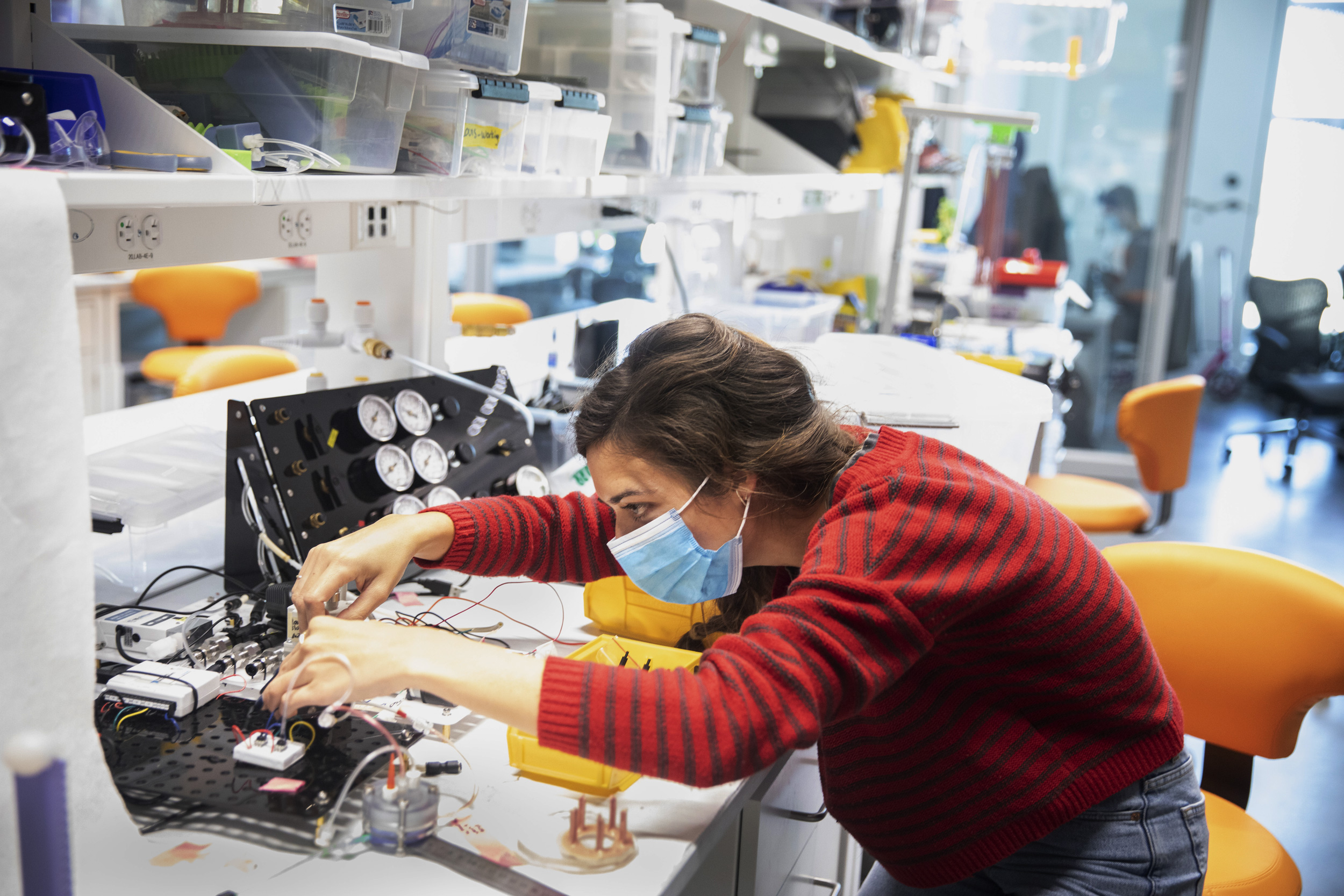
Elizabeth Gallardo Hevia, a Ph.D. candidate at GSAS, says her work “creates hardware made out of rubber and operated with fluids that mirror the functionalities of an electronic microcontroller to evolve the complexity of the tasks that current soft robots can perform.”
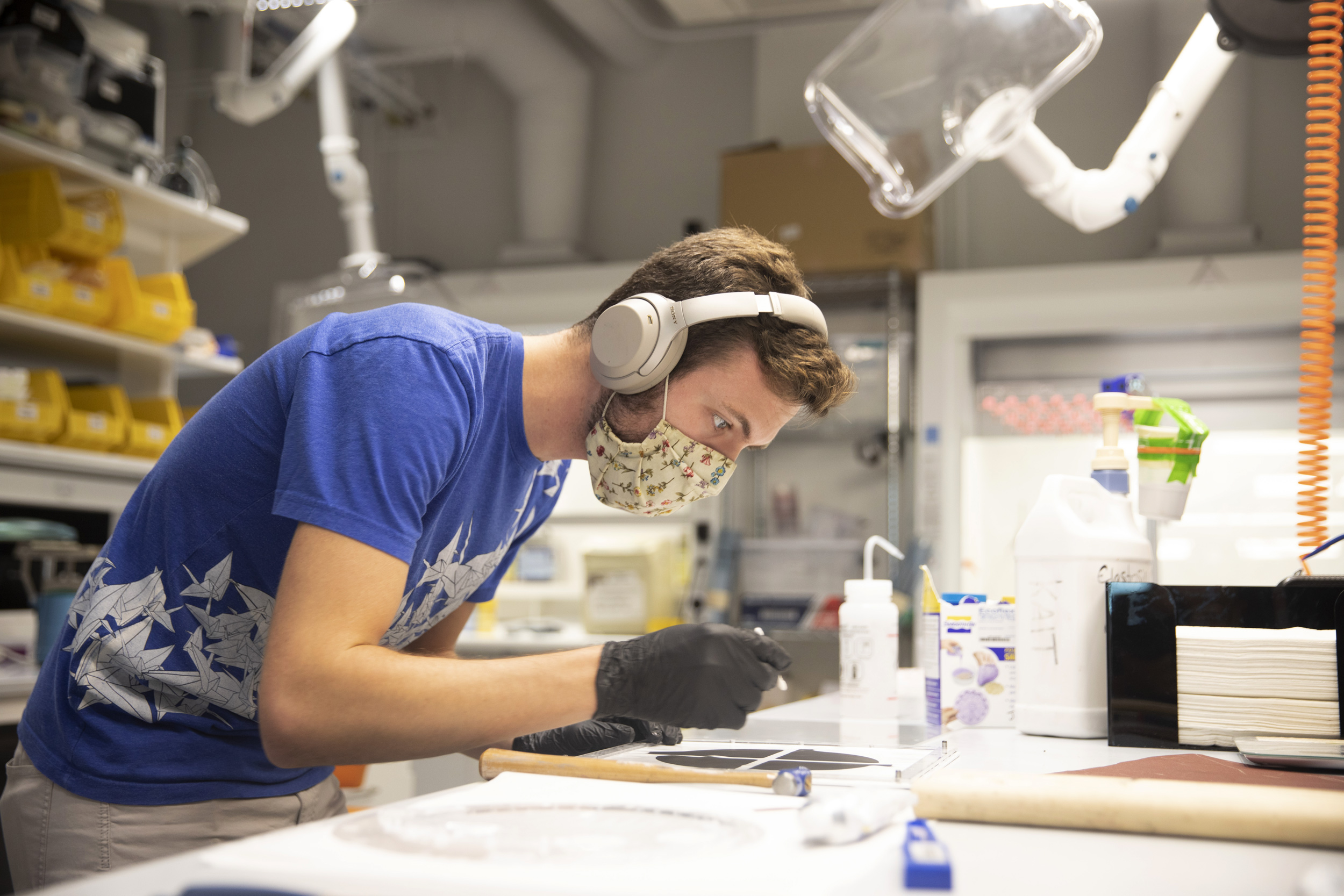
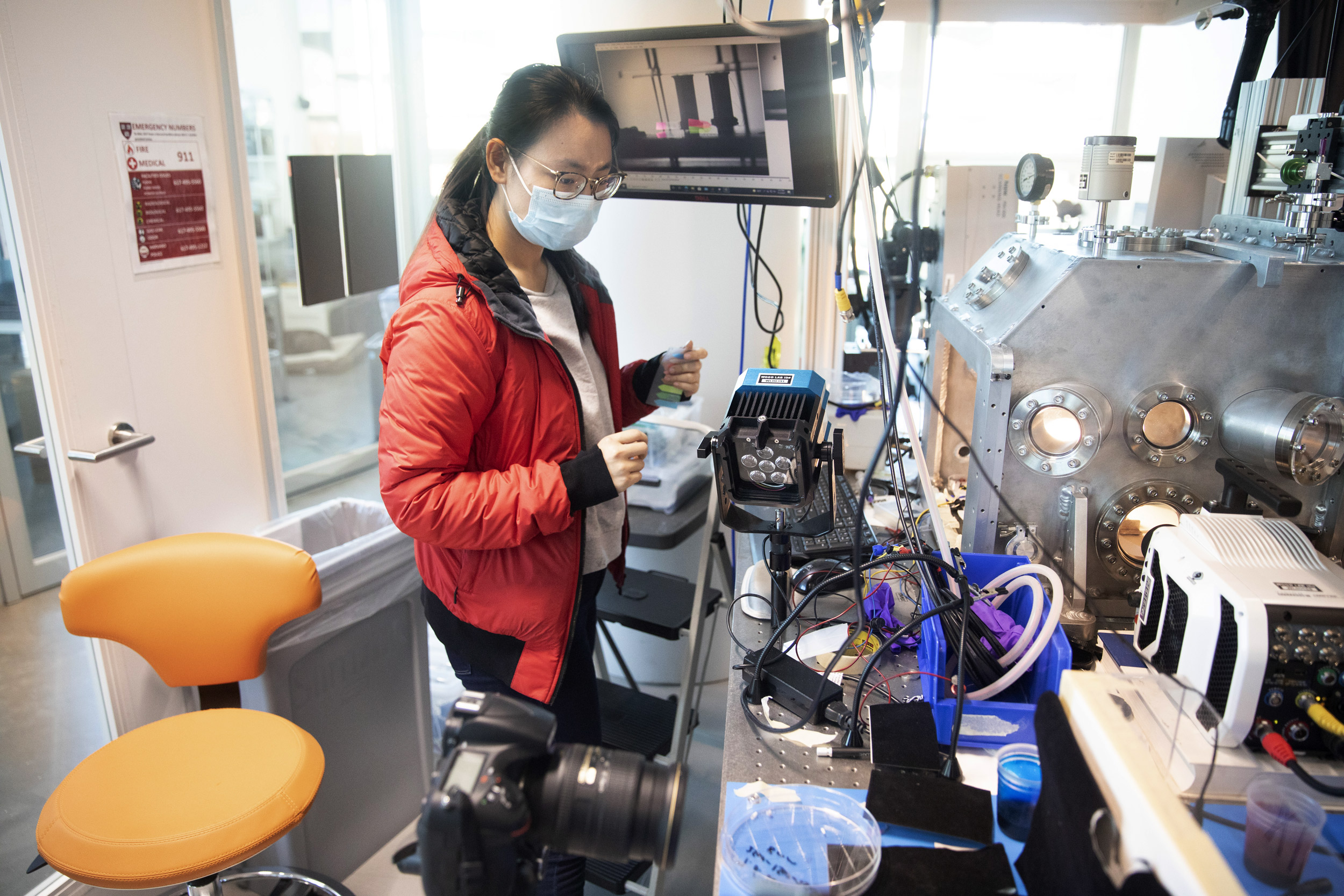
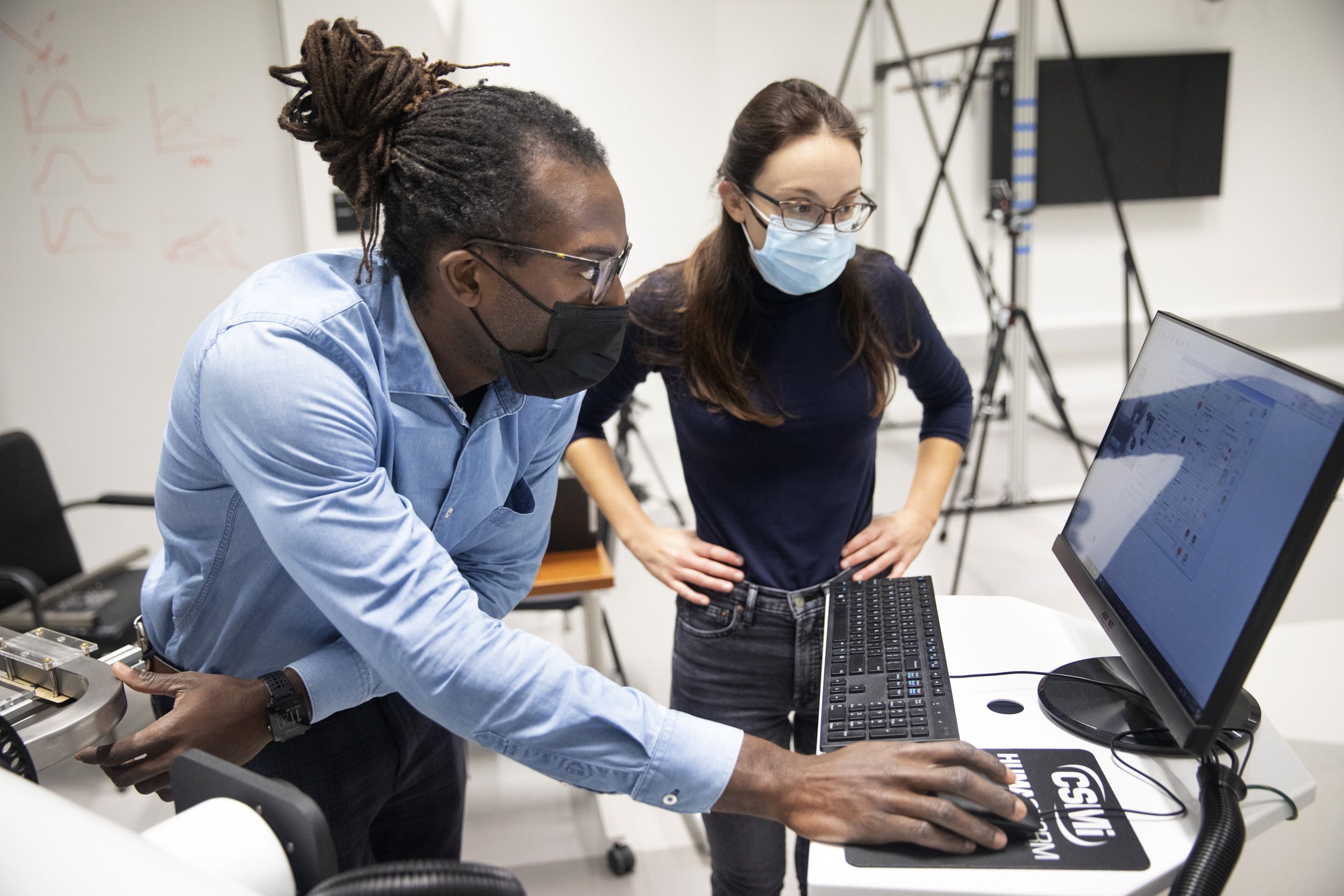
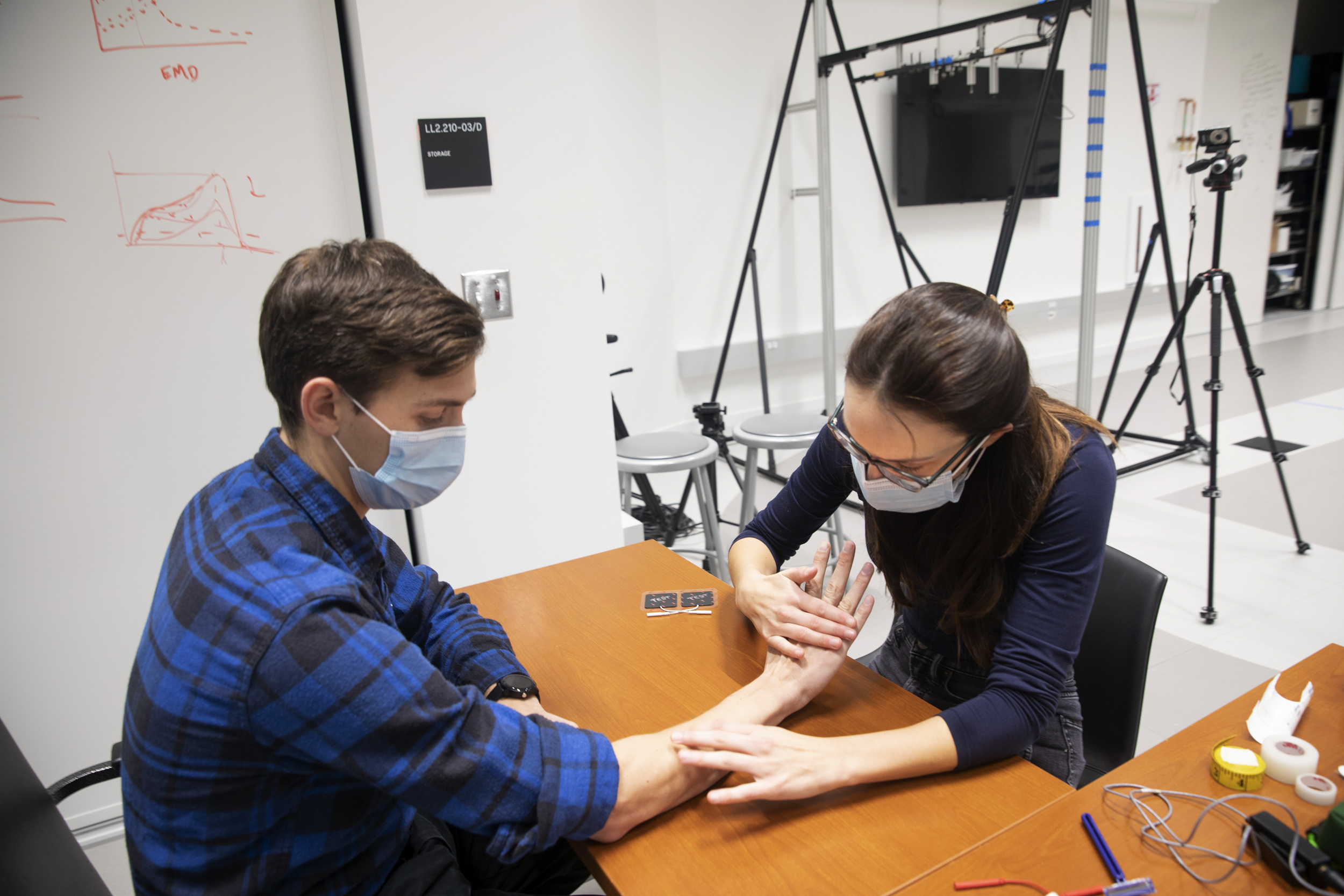
Inside the Harvard Biodesign Lab, Oluwaseun Araromi, a postdoctoral research fellow, works with Lauren Baker, a graduate student in materials science and mechanical engineering, to develop wearable digital health systems that can diagnose and monitor neurodegenerative diseases, such as Parkinson’s. Baker works with Nick Wendel (left), clinical research physical therapist at Boston University’s Center for Neurorehabilitation.
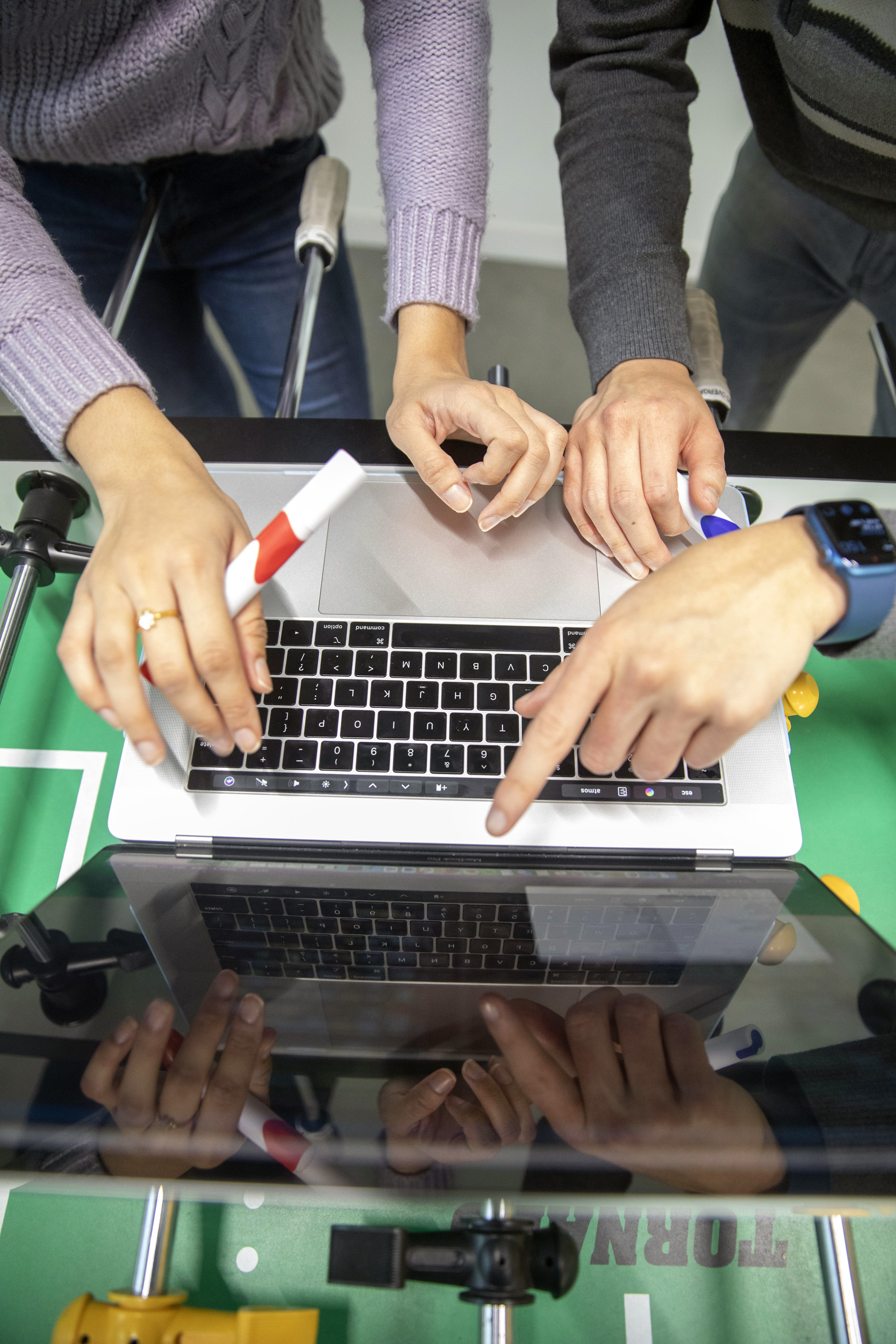
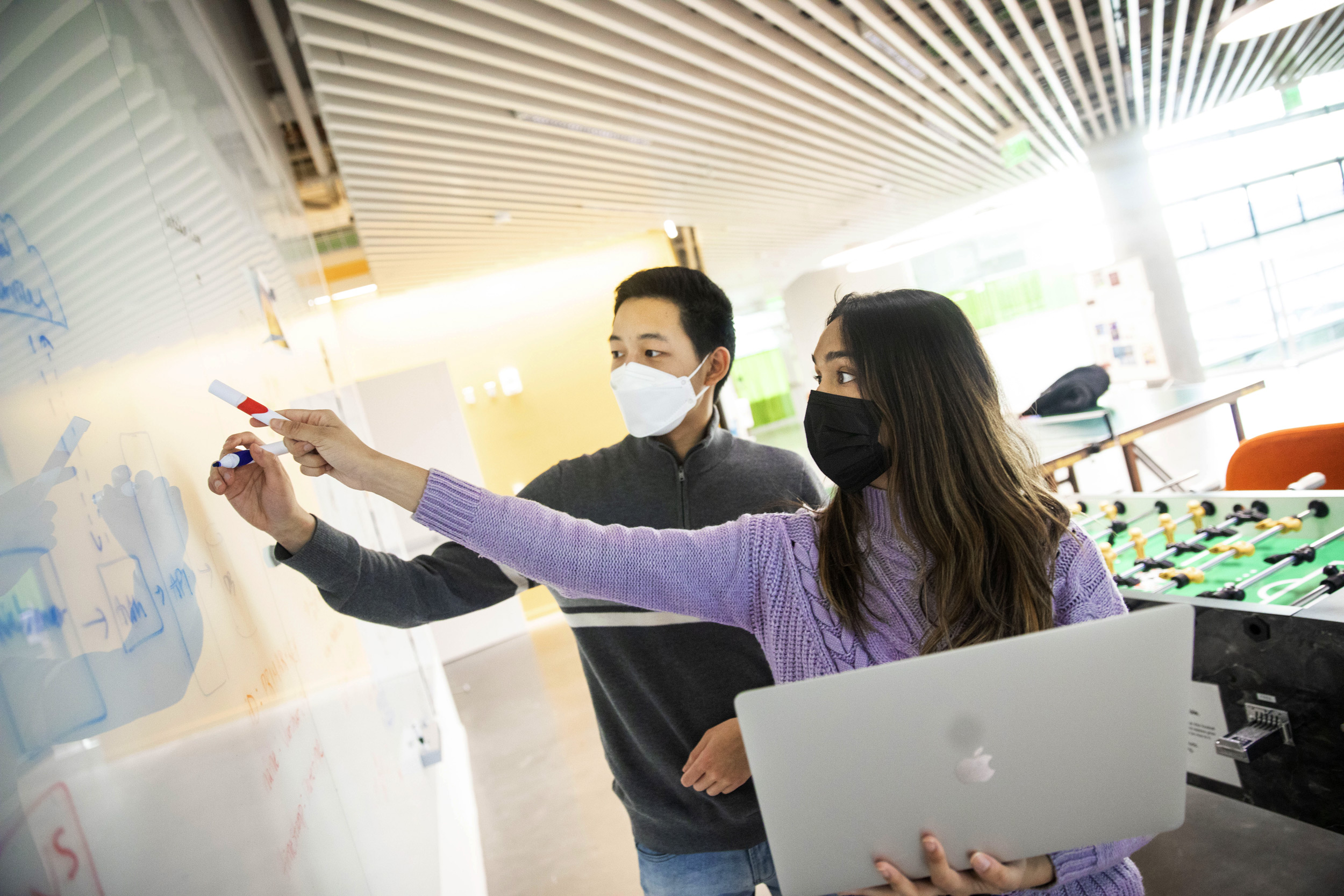
Tulsi Patel ’23 (lavender sweater) and Eric Li ’24 work together at the SEC. Both are members of the Harvard Computer Society Tech for Social Good, a student group dedicated to empowering student leaders to leverage technology to work with nonprofits and government agencies. “A large part of why I chose to pursue computer science is because I believe technology can be a powerful medium for driving meaningful social change,” said Patel, a software engineer for Tech for Social Good.

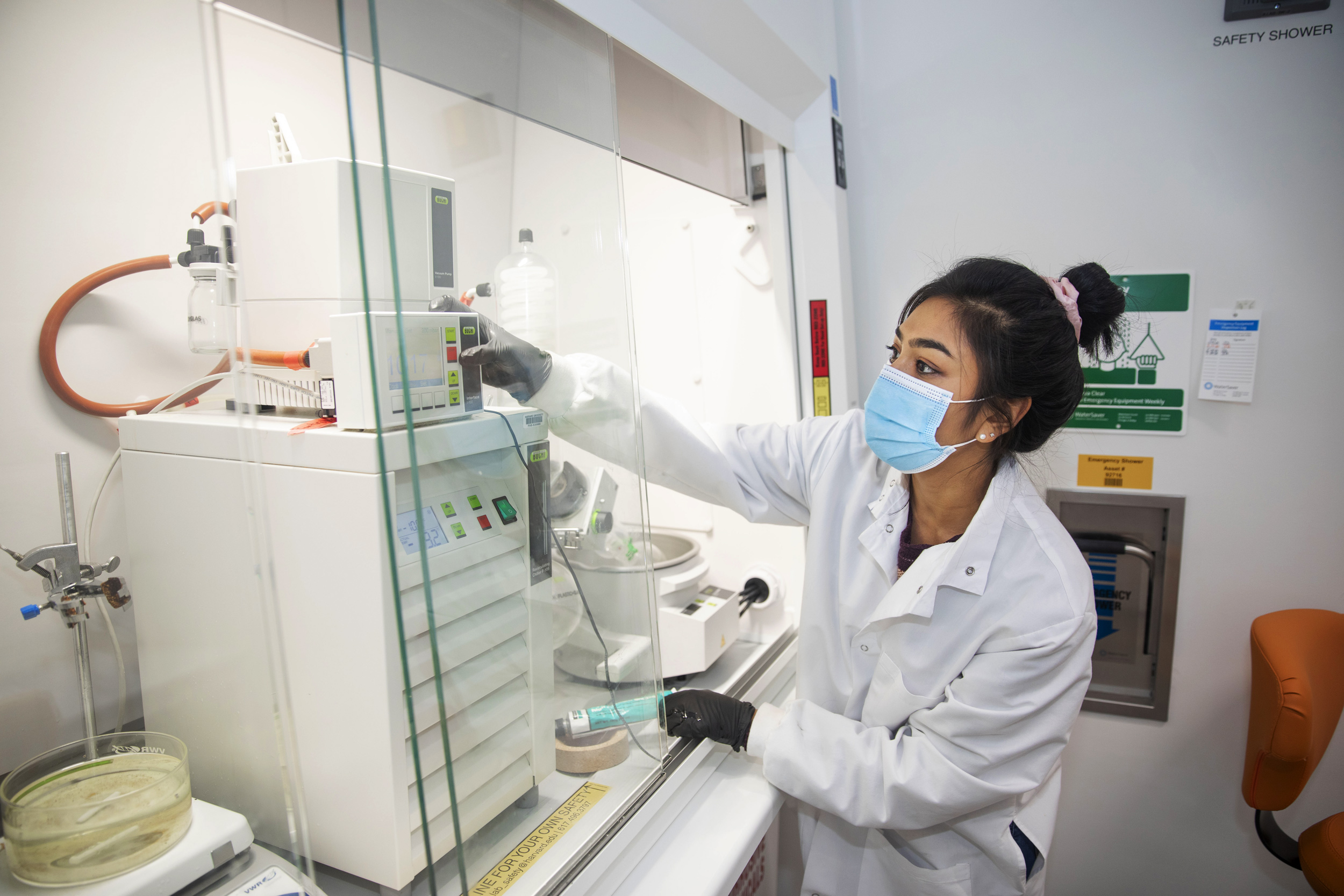
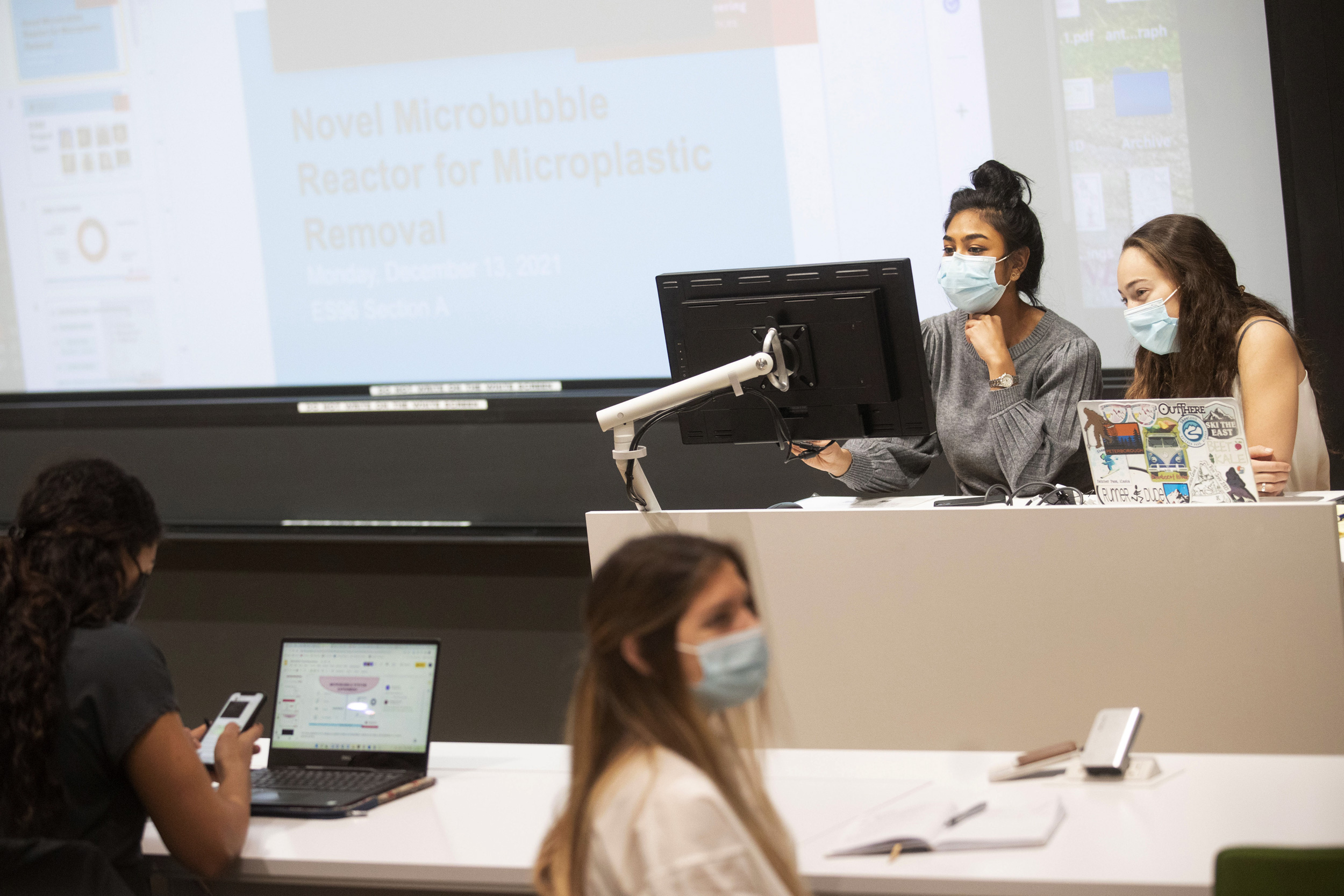
In the Mitragotri Laboratory for Drug Delivery in the SEC, teaching fellow Danika Rodrigues focuses on the local delivery of ionic liquids for cancer applications. She is pictured synthesizing an ionic liquid. Danika Rodrigues (left) helps Ursula Volz ’22 prepare a final presentation for a sustainability lab project as part of Engineering and Problem-Solving and Design ES 96.
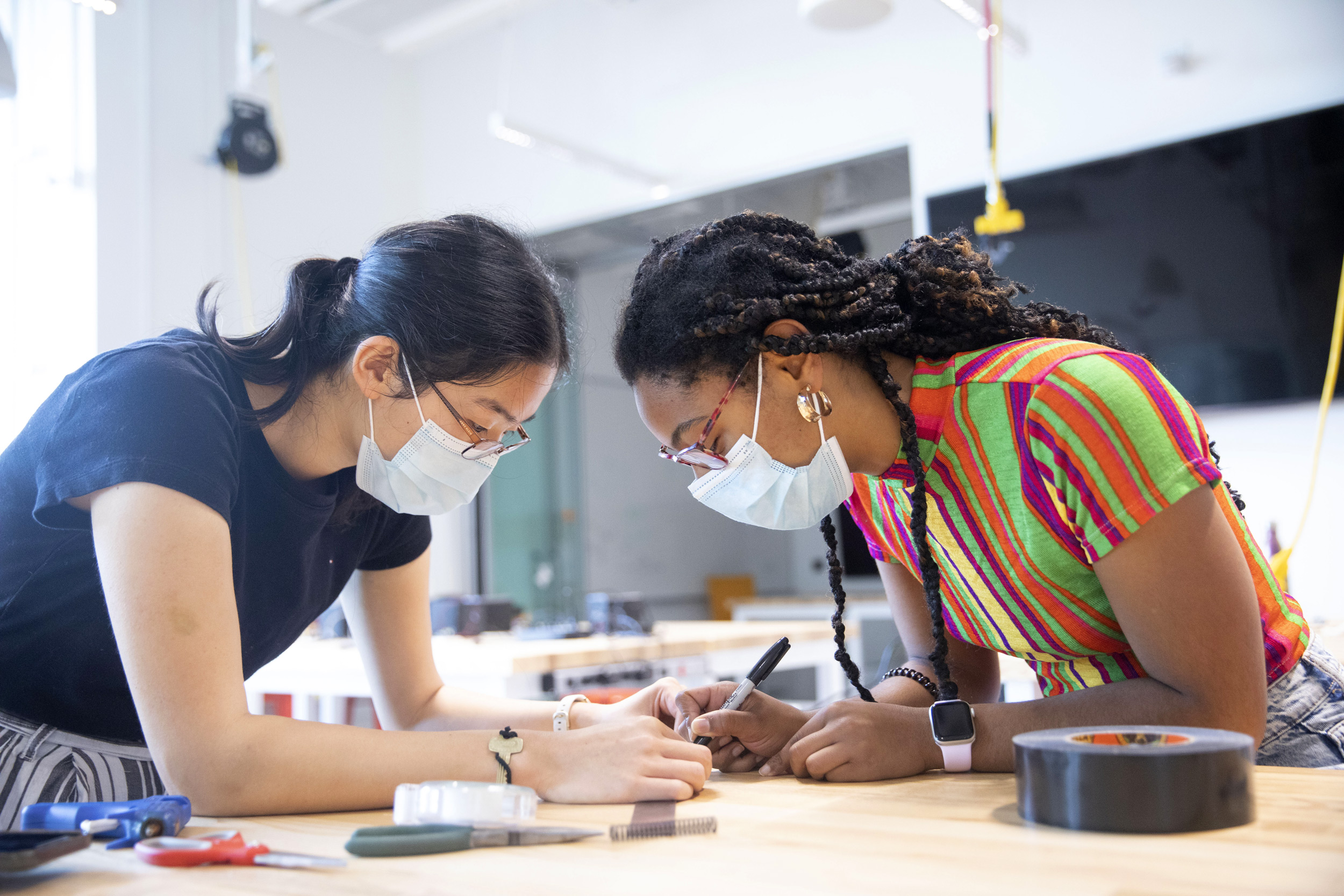
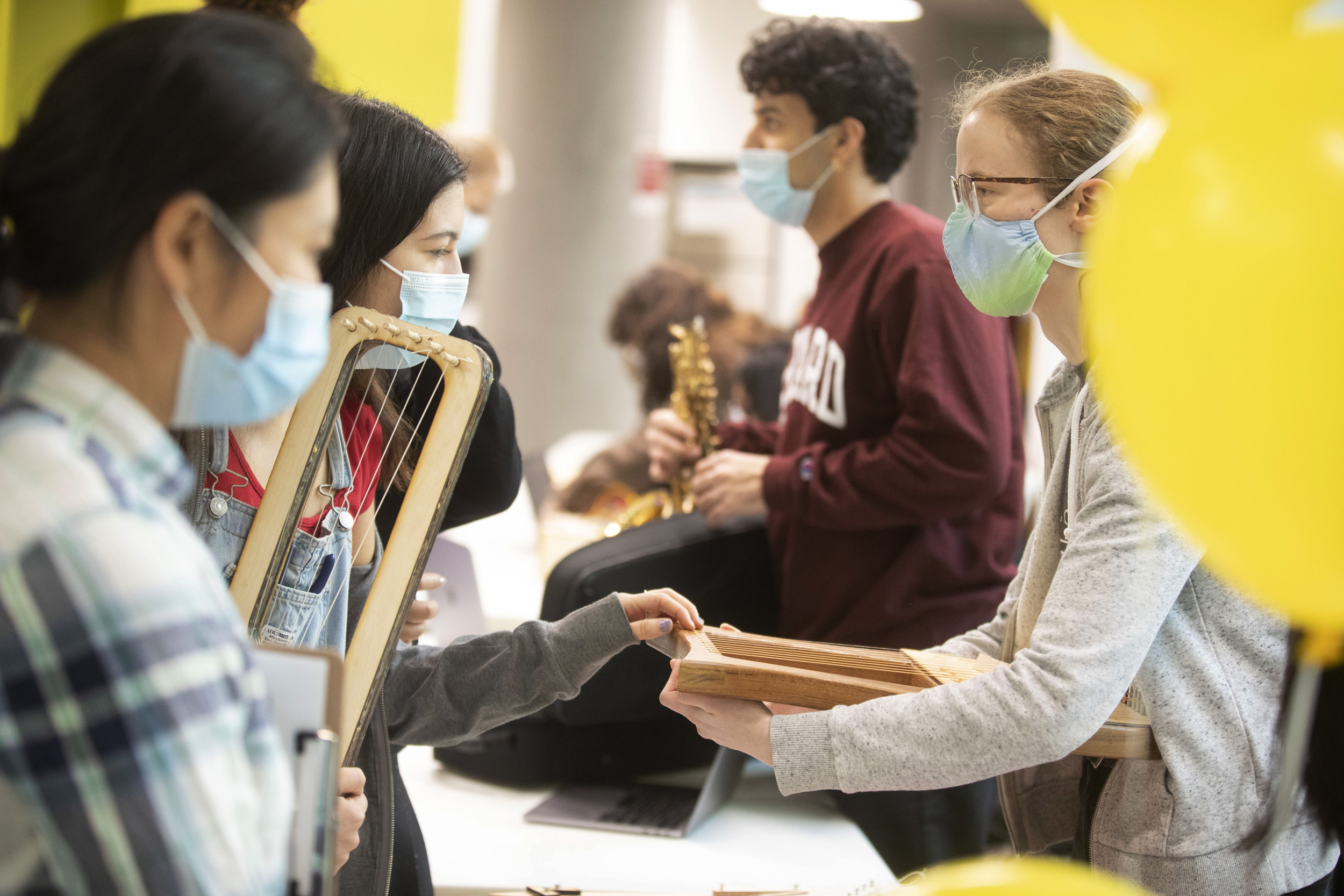
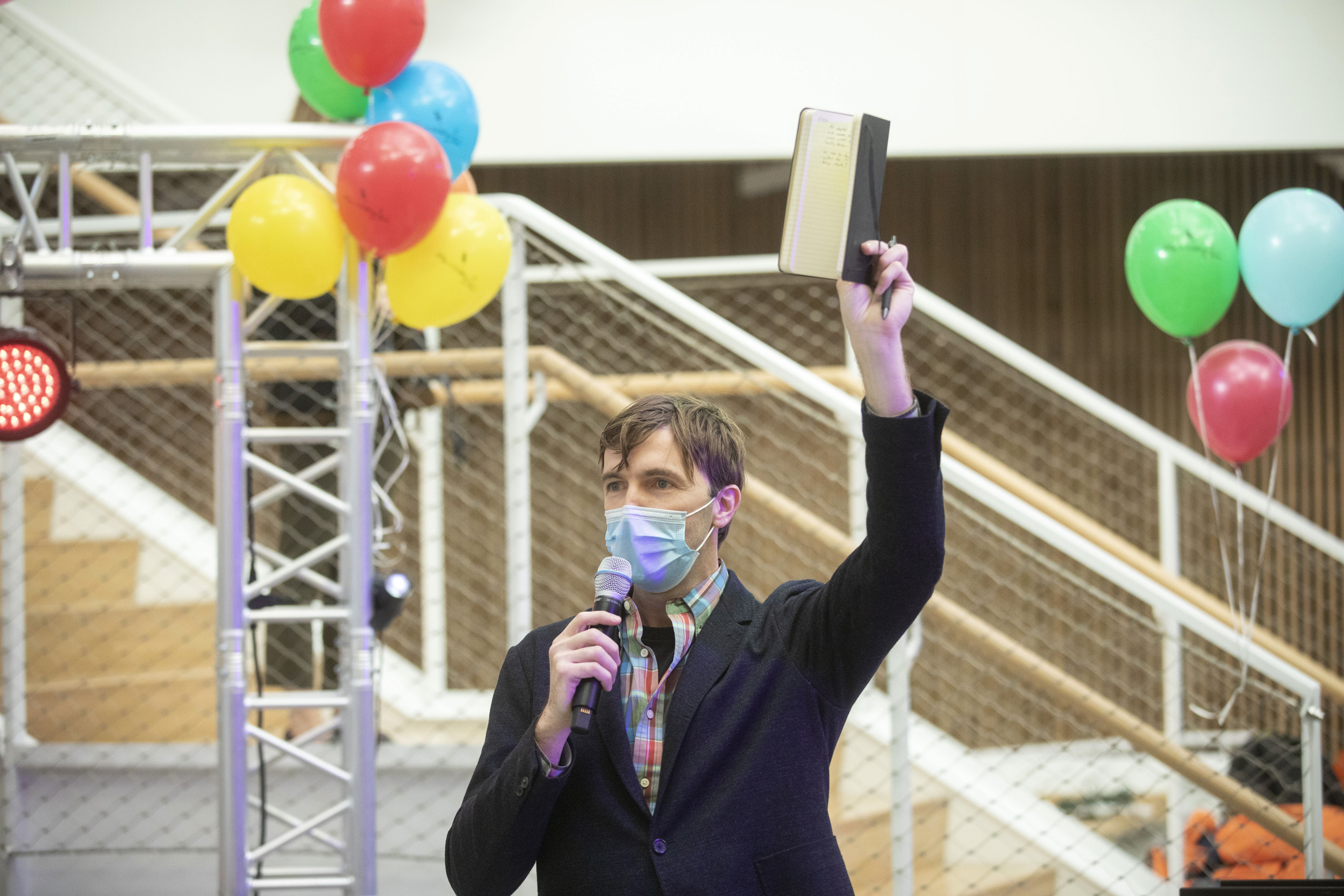
Amelia Heymach ’25 (left) is intrigued by a digital harp made by Clarissa Briasco-Stewart, which was showcased as part of the three-day GenEd1080 Fest, where students shared musical instruments they built in the Active Learning Laboratory. Professor Robert Wood kicks off ceremonies for GenEd1080 Fest.
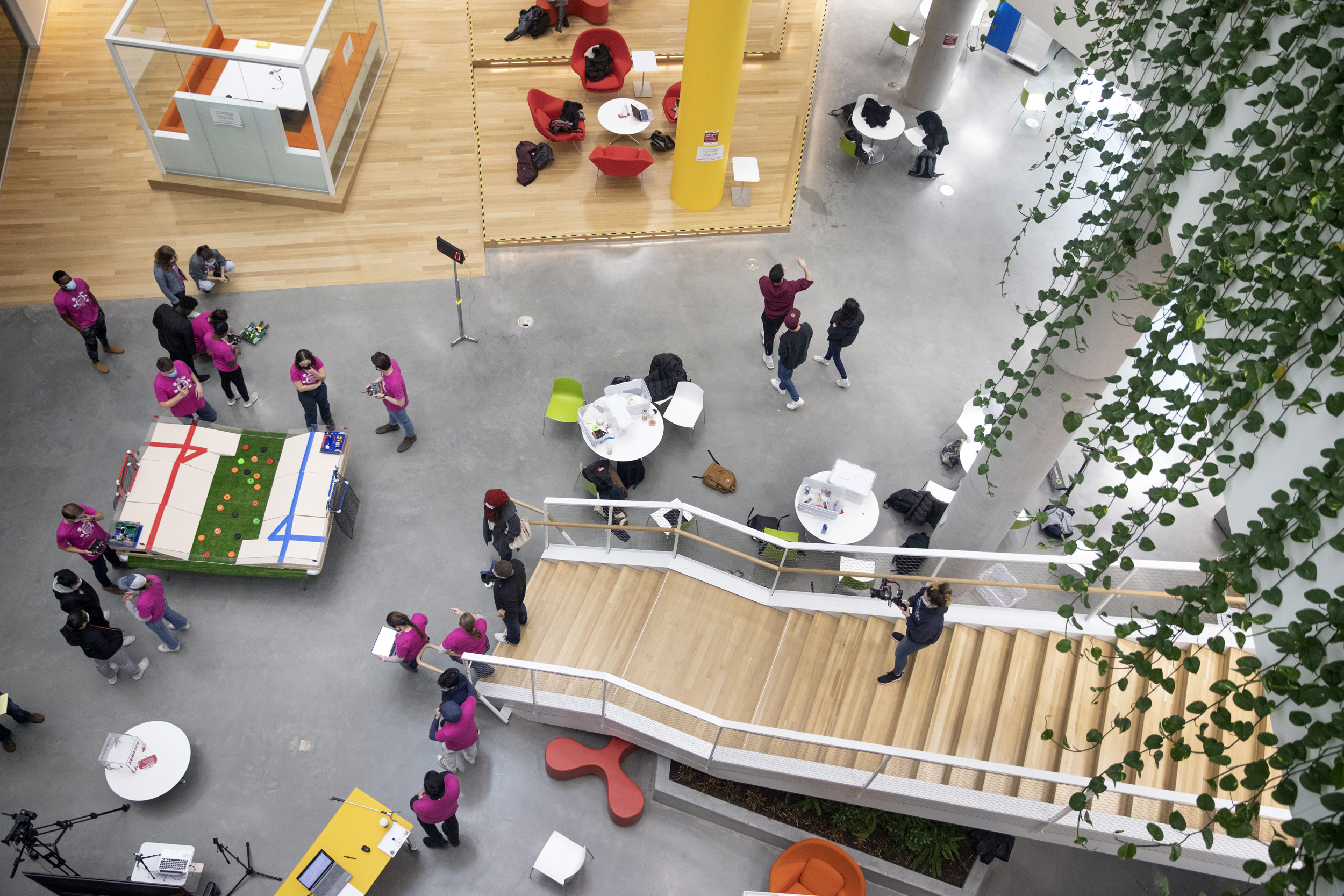
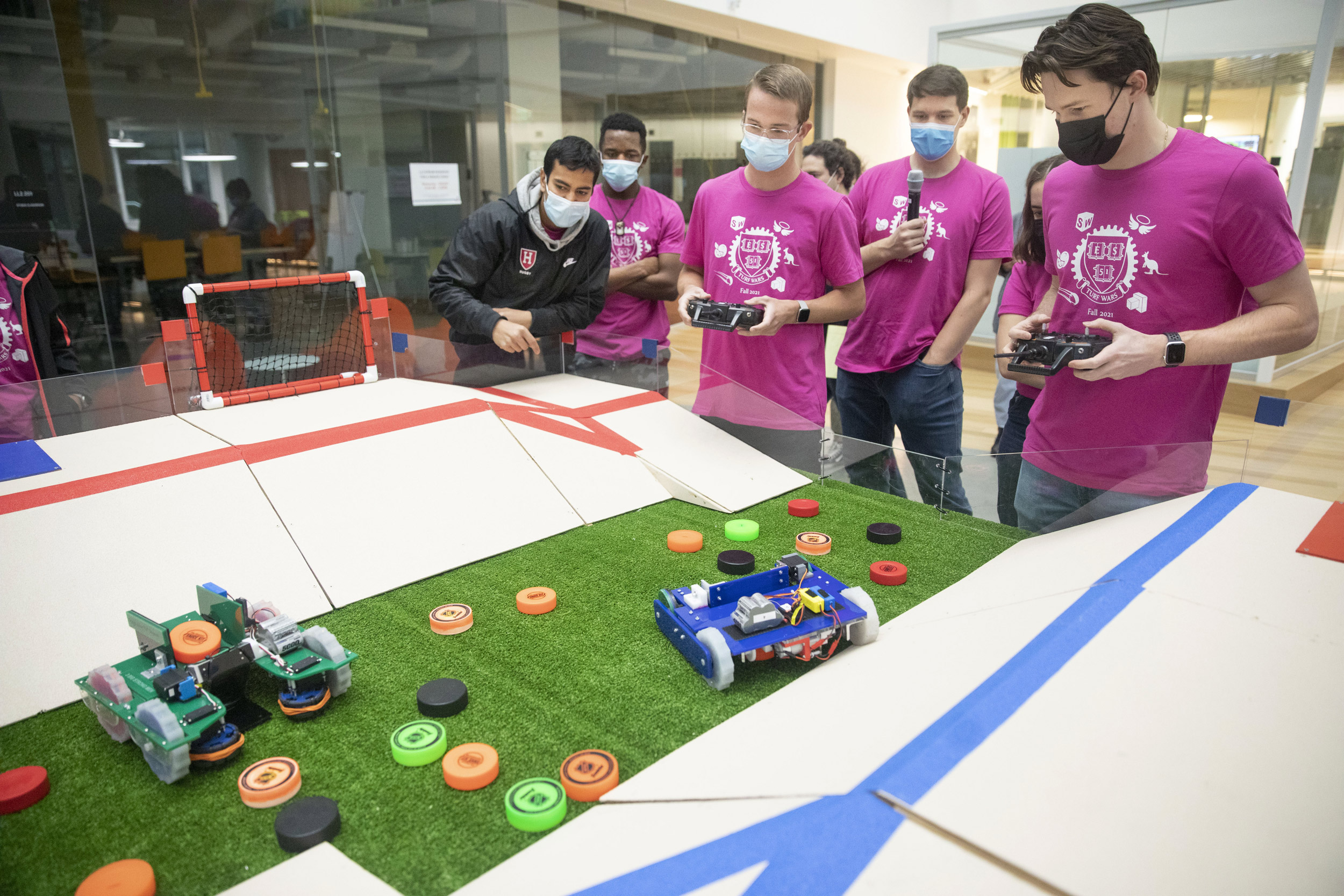
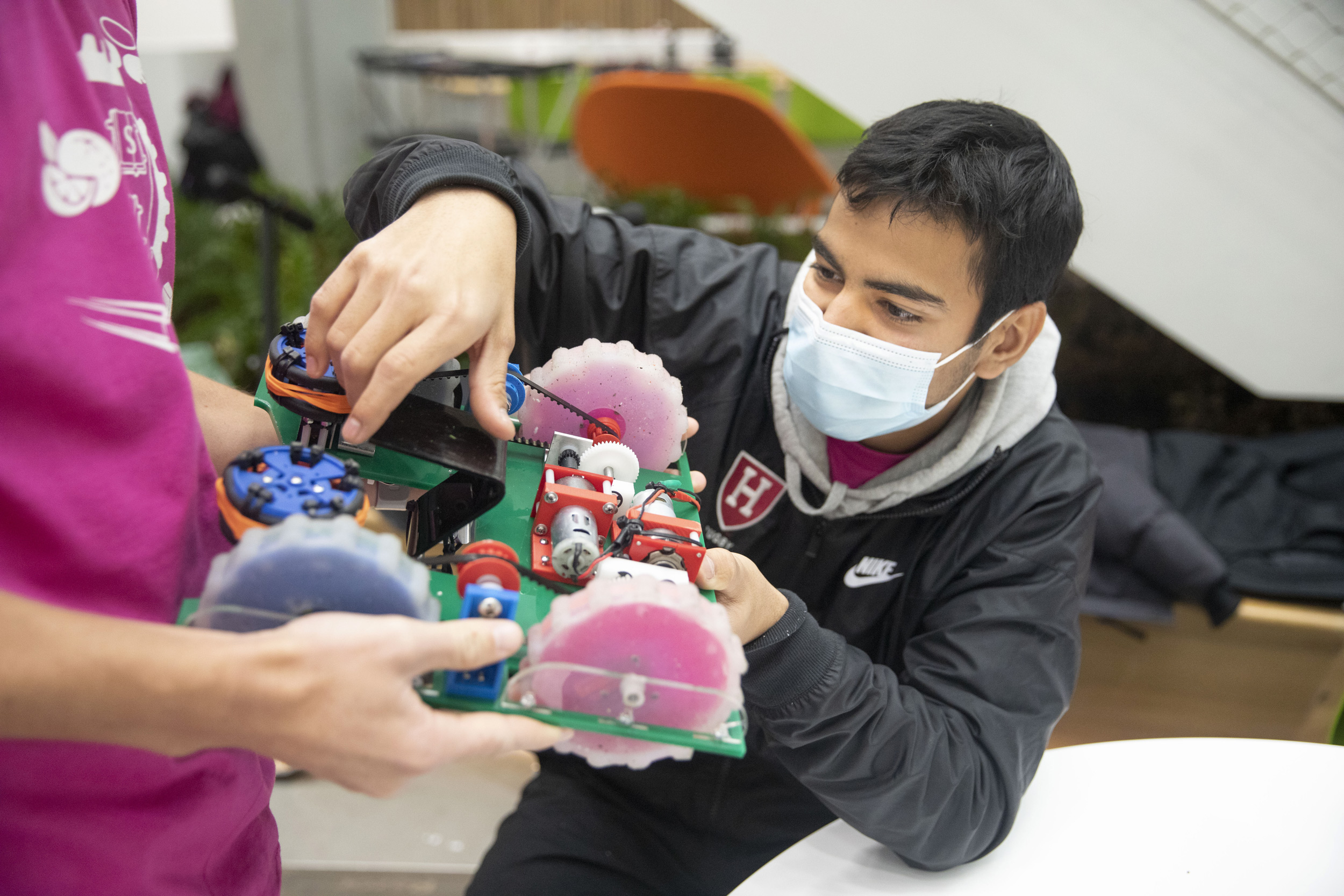
Rohan Jakhete ’24 (from left), Michael Awah ’25, Alex Bell ’25, Cloud Barre ’23 (with microphone, an ES-51 teaching fellow), and Noah Miles ’24 team up during Turf Wars. “It was great to finally see all our hard work come together. My engineering knowledge and skills have improved significantly this semester through ES51, and it was rewarding to see that improvement applied,” said Miles. Rohan Jakhete ’24 (right) and Alex Bell ’25 (hands shown) make a pit stop during Turf Wars.
